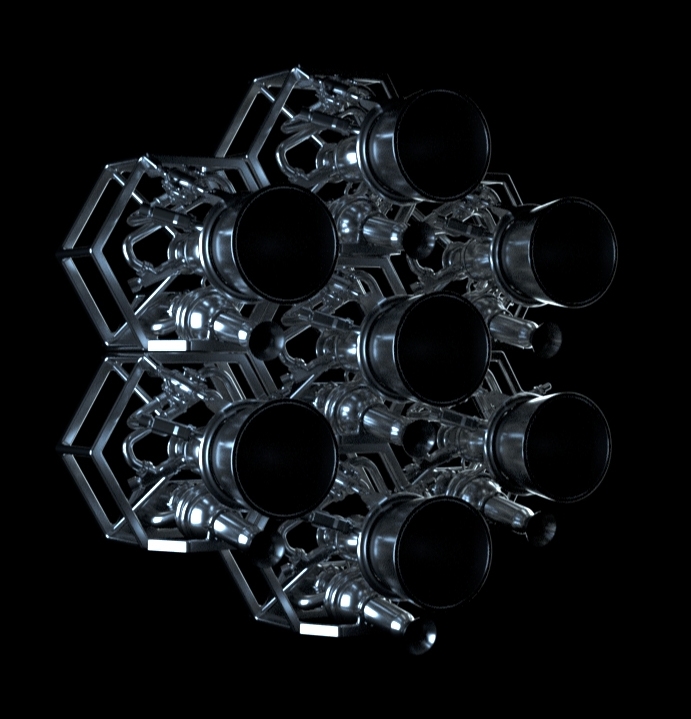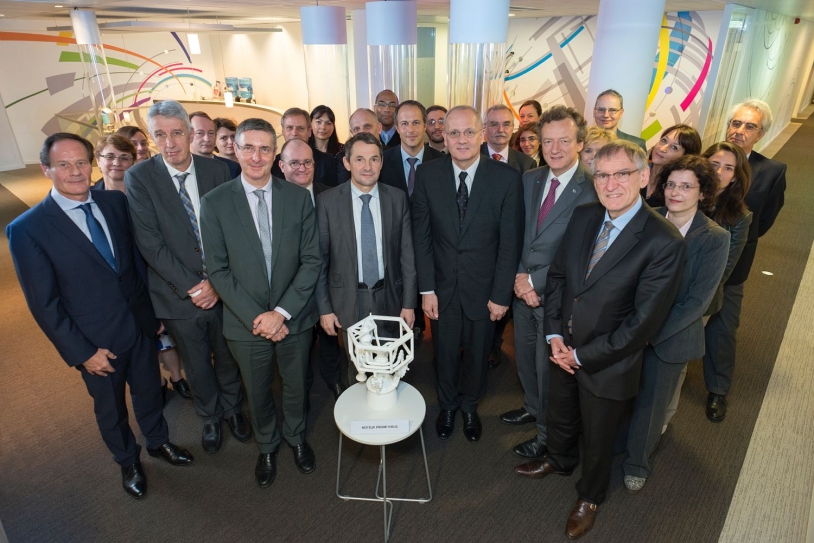Ariane 7 vers 2030 ?
Après Ariane 6, Ariane Group et ESA, voient plus loin ...
Un moteur principal beaucoup plus simple, et 10X moins cher **, pour remplacer le Vulcain 2 ...Le Prometheus
LOX, plus du méthane liquide comme carburant, et un moteur ré-utilisable . Bravo !
Dans la ligne actuelle qui voit l'abandon progressif de l'hyrogène, et des super rendements spécifiques.
Au profit de solutions mécaniquement plus simples et moins compliquées à mettre en oeuvre, même si le rendement souffre un peu !
Un projet commencé en 2015, qui reçoit l'impulsion pour continuer la RD.
** 10X moins cher, hum ? 10 X plus simple, ou ils comptent le récupérer 10 fois, ce n'est pas trop clair ...
Probablement des turbo-pompes simplifiées (Peut être même absentes, si la pressurisation des réservoirs est possible) et des mélangeurs régulateurs moins compliqués, le trés grand froid de l'H2L, en moins pour commencer ...
http://www.spacedaily.com/reports/ArianeGroup_signs_contract_with_ESA_to_develop_Prometheus_engine_999.html
The objective of this demonstrator is notably to produce an engine for 1 million euros, versus the approximately 10 million euros it now costs to produce a Vulcain2.
The success of this technological challenge is based on a new design and on the extensive use of innovative methods and means such as 3D printing, predictive maintenance and digital control.
The Prometheus project was begun in November, 2015, with partnership investments between the French space agency (CNES) and ArianeGroup, but took on a truly European dimension in December 2016, at the last ESA ministerial level conference in Lucerne. Prometheus was then allocated a budget of more than 80M euro .
The contract signed also marked the addition of European industrial partners to the Prometheus demonstrator project, including Avio from Italy, GKN from Sweden, Safran AeroBooster from Belgium, and the German and French entities of ArianeGroup.
The first tests are scheduled for 2020 in Lampoldhausen (Germany), on the site of the German aerospace agency (DLR).
Après Ariane 6, Ariane Group et ESA, voient plus loin ...
Un moteur principal beaucoup plus simple, et 10X moins cher **, pour remplacer le Vulcain 2 ...Le Prometheus
LOX, plus du méthane liquide comme carburant, et un moteur ré-utilisable . Bravo !
Dans la ligne actuelle qui voit l'abandon progressif de l'hyrogène, et des super rendements spécifiques.
Au profit de solutions mécaniquement plus simples et moins compliquées à mettre en oeuvre, même si le rendement souffre un peu !
Un projet commencé en 2015, qui reçoit l'impulsion pour continuer la RD.
** 10X moins cher, hum ? 10 X plus simple, ou ils comptent le récupérer 10 fois, ce n'est pas trop clair ...
Probablement des turbo-pompes simplifiées (Peut être même absentes, si la pressurisation des réservoirs est possible) et des mélangeurs régulateurs moins compliqués, le trés grand froid de l'H2L, en moins pour commencer ...
http://www.spacedaily.com/reports/ArianeGroup_signs_contract_with_ESA_to_develop_Prometheus_engine_999.html
The objective of this demonstrator is notably to produce an engine for 1 million euros, versus the approximately 10 million euros it now costs to produce a Vulcain2.
The success of this technological challenge is based on a new design and on the extensive use of innovative methods and means such as 3D printing, predictive maintenance and digital control.
The Prometheus project was begun in November, 2015, with partnership investments between the French space agency (CNES) and ArianeGroup, but took on a truly European dimension in December 2016, at the last ESA ministerial level conference in Lucerne. Prometheus was then allocated a budget of more than 80M euro .
The contract signed also marked the addition of European industrial partners to the Prometheus demonstrator project, including Avio from Italy, GKN from Sweden, Safran AeroBooster from Belgium, and the German and French entities of ArianeGroup.
The first tests are scheduled for 2020 in Lampoldhausen (Germany), on the site of the German aerospace agency (DLR).







